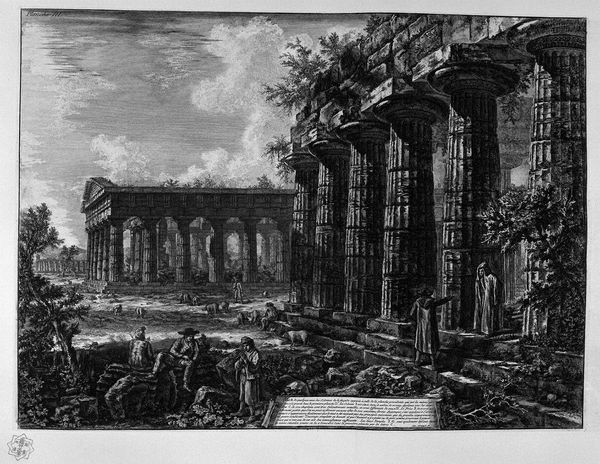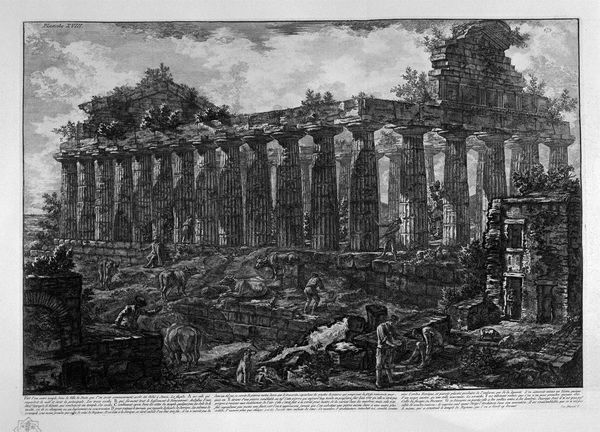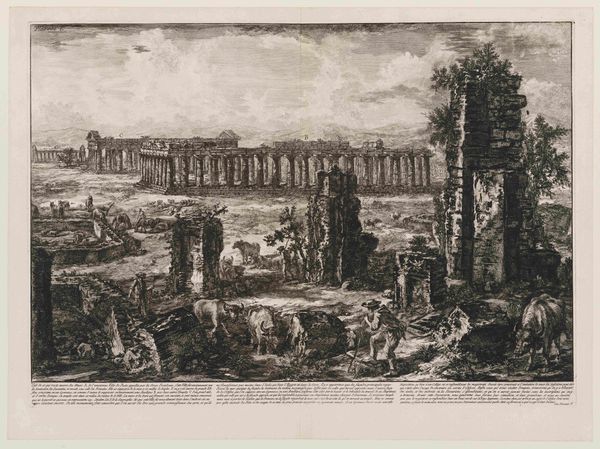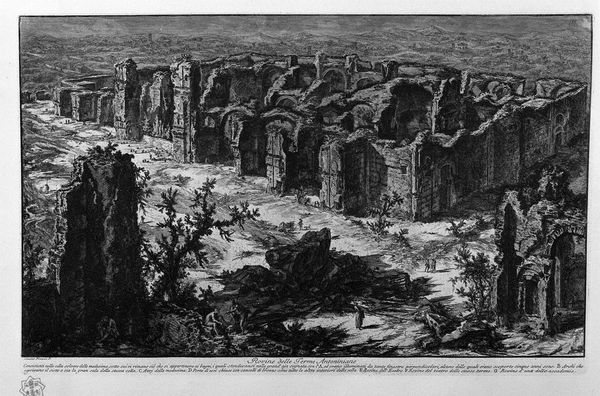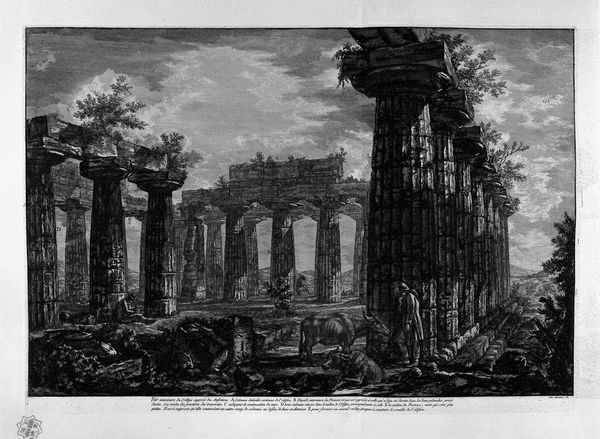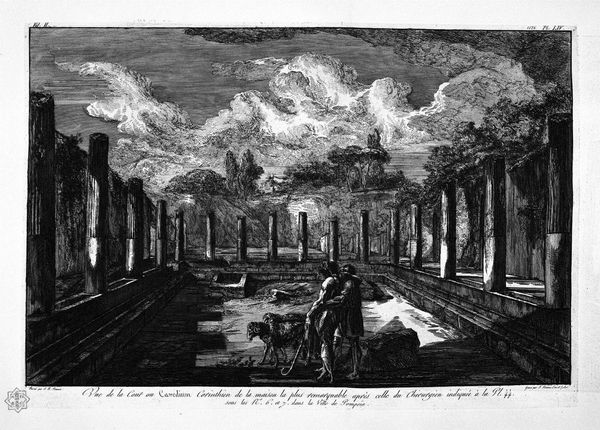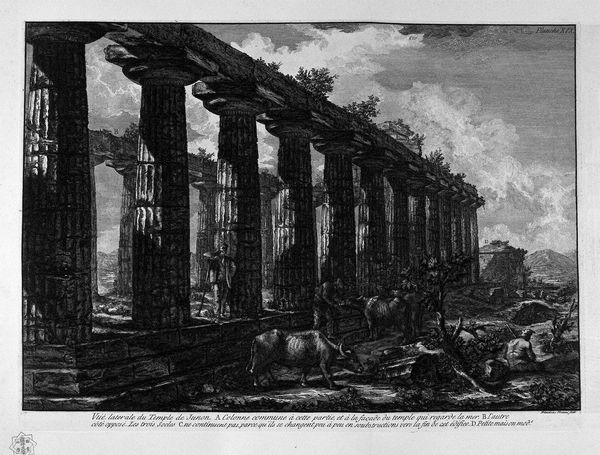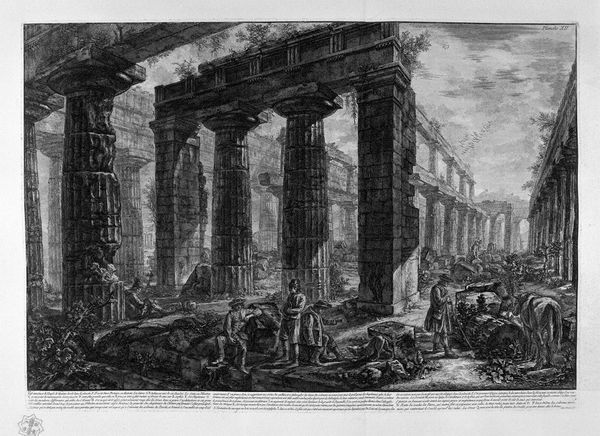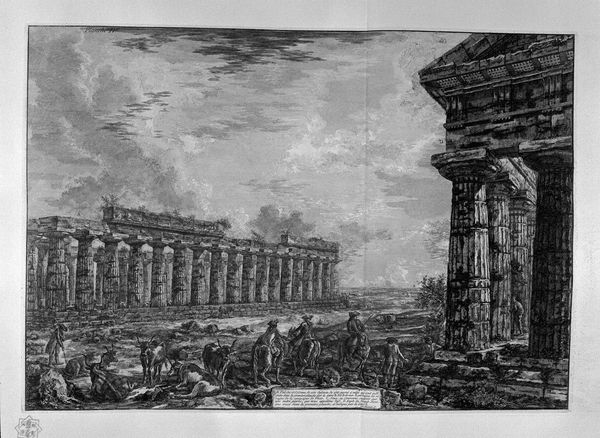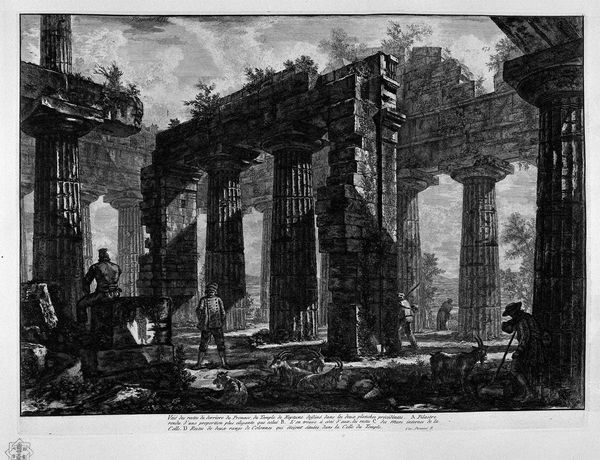
print, etching, engraving
#
neoclacissism
# print
#
etching
#
pencil sketch
#
landscape
#
perspective
#
charcoal drawing
#
ancient-mediterranean
#
column
#
pen-ink sketch
#
cityscape
#
history-painting
#
charcoal
#
engraving
Copyright: Public domain
This is Giovanni Battista Piranesi's etching, 'View the remains of the ancient city of Paestum'. It’s a depiction of an archaeological site made by an artist working in 18th-century Italy. Piranesi’s image presents the viewer with a stark contrast between the grandeur of classical architecture and its decay. The temples of Paestum, though still imposing, are shown in ruin, overgrown with vegetation, and surrounded by grazing animals. This imagery speaks to the Enlightenment fascination with classical antiquity, a period of intense archaeological exploration, but also a sense of its irretrievable loss. The print was likely produced for wealthy European tourists, who were increasingly undertaking the 'Grand Tour' to visit historical sites. Piranesi’s images catered to this market, providing romantic views of ancient ruins that fueled a sense of historical continuity, but also of the transience of human achievement. To understand Piranesi's images, scholars consult a range of sources, including contemporary travel literature, architectural treatises, and the artist's own writings. Through this research, we can understand the cultural and intellectual contexts that gave rise to this compelling vision of the past.
Comments
No comments
Be the first to comment and join the conversation on the ultimate creative platform.
